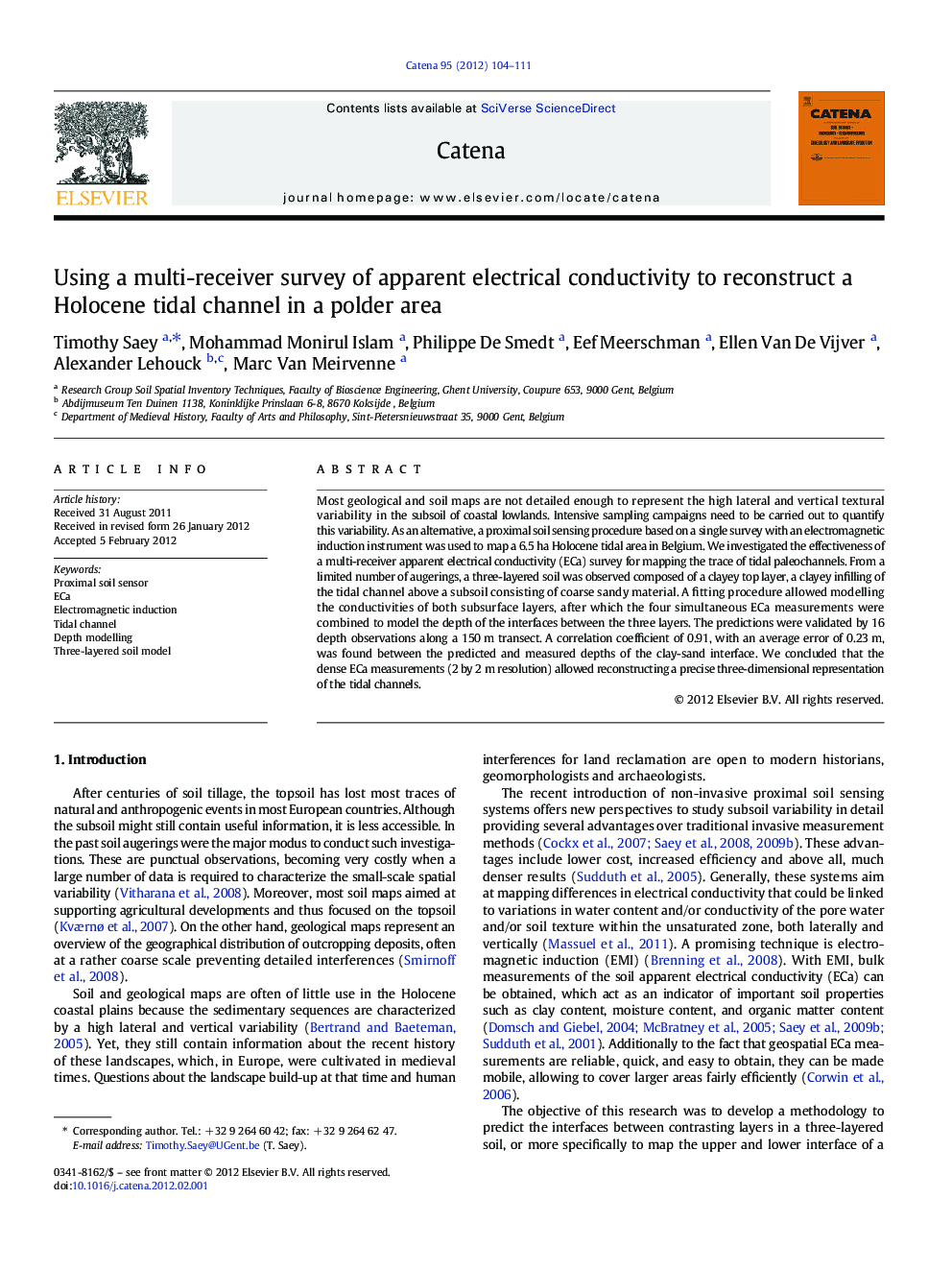| Article ID | Journal | Published Year | Pages | File Type |
|---|---|---|---|---|
| 4571825 | CATENA | 2012 | 8 Pages |
Most geological and soil maps are not detailed enough to represent the high lateral and vertical textural variability in the subsoil of coastal lowlands. Intensive sampling campaigns need to be carried out to quantify this variability. As an alternative, a proximal soil sensing procedure based on a single survey with an electromagnetic induction instrument was used to map a 6.5 ha Holocene tidal area in Belgium. We investigated the effectiveness of a multi-receiver apparent electrical conductivity (ECa) survey for mapping the trace of tidal paleochannels. From a limited number of augerings, a three-layered soil was observed composed of a clayey top layer, a clayey infilling of the tidal channel above a subsoil consisting of coarse sandy material. A fitting procedure allowed modelling the conductivities of both subsurface layers, after which the four simultaneous ECa measurements were combined to model the depth of the interfaces between the three layers. The predictions were validated by 16 depth observations along a 150 m transect. A correlation coefficient of 0.91, with an average error of 0.23 m, was found between the predicted and measured depths of the clay-sand interface. We concluded that the dense ECa measurements (2 by 2 m resolution) allowed reconstructing a precise three-dimensional representation of the tidal channels.
► Multi-receiver proximal soil sensing was used to map a Holocene tidal channel. ► A three-layered soil model was developed to model the depth of the interfaces. ► A fitting procedure allowed quantifying the conductivities of both subsoil layers. ► The interface depths could be determined precisely. ► The obtained palaeochannel model aids geoarchaeological interpretations.
